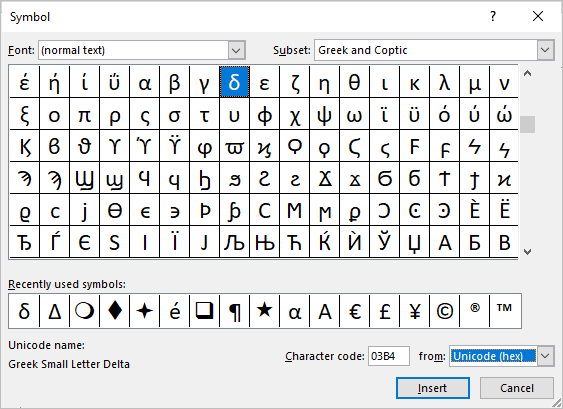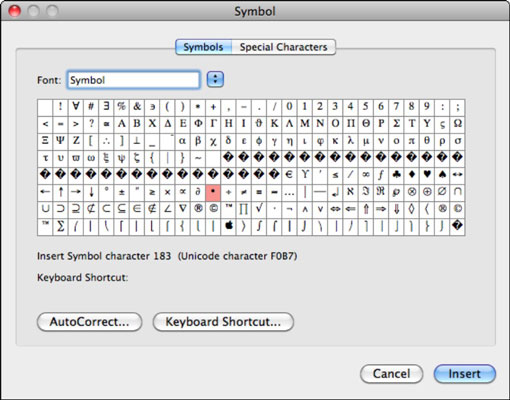

- ADD GREEK LETTERS IN EXCEL FOR MAC 2011 HOW TO
- ADD GREEK LETTERS IN EXCEL FOR MAC 2011 FULL
- ADD GREEK LETTERS IN EXCEL FOR MAC 2011 CODE
ADD GREEK LETTERS IN EXCEL FOR MAC 2011 CODE
The first section of this code #,#0 is for a positive number, and second code -#,#0 is for a negative number. STEP 2: Select the Custom category and select a number format type – “#,#0 -#,#0 STEP 1:Enter a Variance calculation in a column, select the column’s variance numbers and press CTRL + 1 to bring up the Format Cells dialogue box The table should look something like this:


So, you have the % variance value customized as below: You want the % Variance column in our data to have symbols ▲▼ to show a negative and positive variance. Here, you have monthly sales, estimates benchmark sales and variance calculated. This is how the table will look like this. Use the format type – ✓” Completed” ✕” Pending” to add green color to the completed project and red to pending projects. You can also add color to make the formatting more distinct. This will change the format to ✓ Completed when cell value is 0 and ✕ Pending when cell value is -1. STEP 3:Select the Custom category and select a number format type – ✓” Completed” ✕” Pending”. STEP 2: Press Ctrl +1 to open the Format Cells dialog box The table with custom symbols should look like this: Now you want to create custom symbols in Excel i.e.

In the table below, you have the status for different projects listed below with “0″ indicating Completed and “-1” indicating Pending. So, the symbols added would be based on the value stored in the cell.
ADD GREEK LETTERS IN EXCEL FOR MAC 2011 HOW TO
Now let’s move forward and understand how to add symbols based on the number stored in the cell. In Example #1, you have learned how to add symbols in Excel irrespective of the cell’s value. This is how the edited table will look like. STEP 4: In the type section, type 0.00 ☌ and Click OK STEP 3: In the Format Cell dialog box, select Custom STEP 2: Go to Home > Under Format Dropdown, Select More Number Formats The following steps should be incorporated to create custom symbols in Excel: You want to add “ ☌” symbol to the temperature column and the edited table like this: In the table below, you have daily temperature recorded and you want to add symbol ☌ to it. You can view the Custom Number Formats blog post that explains this in more detail here Positive format Negative format Zero format Text format.Įach of these sections is separated by a semicolon( ) and only the first section is required to create a custom format. When adding a custom format in Excel, there are four formatting sections that you have to follow: Number format code is created using symbols that tells Excel how you want to display the cell’s value. You can change the format of a cell’s value by either using various formats available in Excel or creating a custom format using number format code. You can even create custom symbols in Excel using this feature!īut before you understand how to add a symbol to a number in Excel, you need to first know how to write a number format code. This brings up the Format Cells dialogue box and under the Custom category, you can customize the Type to whatever you like. The key benefit of adding custom formatting is that it only controls how the number is displayed without changing the underlying value of that number.Ī cool feature within Excel is the ability to format a cell’s value by pressing CTRL + 1 on any cell. But if none of them meets your requirement, you will have to create your own. Excel has several in-built features to create custom formatting to your numbers.


 0 kommentar(er)
0 kommentar(er)
